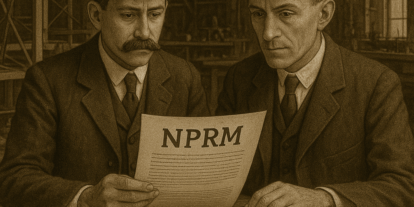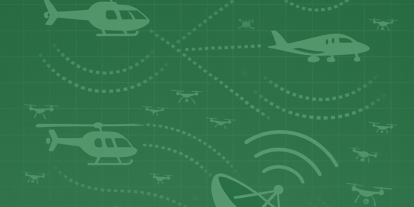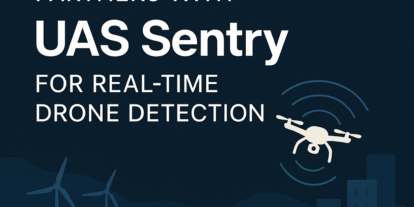Debating Network vs. Broadcast Remote ID Misses the Point.
When Kittyhawk launched our live telemetry and sharing functionality close to three years ago, regulations had nothing to do with it. Our customers wanted to manage their fleet in real-time. They wanted to identify friendly and rogue aircraft. They wanted to coordinate emergency response. They wanted to contribute safety data to the NAS for everyone’s benefit. Fast forward to today, and that real technological need exists more than ever. Live streaming, live telemetry, and live analysis will drive the next evolution of drone ROI. Live data, most importantly, is at the core of safety and complete situational awareness.
At Kittyhawk, our tech stack and product strategy separate the compliance piece of Remote ID from the enabling capabilities when delivering features to our full spectrum of users and use cases. Our industry would be well served to leave the notion of “Remote ID” to the regulators — that’s a box we’ll also have to check in one way or another. The value of live insights, dynamic airspace, and real-time coordination is too great to muddy with regulations.
As we’re closing in on the final Remote ID rule — currently in review and on pace for publishing this December — I’ve heard a renewed debate on the “right method” of Remote ID. That false premise is a distraction from the opportunity ahead of us. Not only do we need to stop debating differing forms of Remote ID, but we also need to stop conflating the technological and regulatory meanings when we refer to Remote ID.
Whenever a new technology comes about, it’s natural to key in on the method of that technology. Can you call me on a landline instead? Does your home have fiber? Fortunately, it doesn’t take long for function to take over as users focus on what matters. How can I get the best call quality? How can I stream on 11 devices at once?
And that’s when we get to the good stuff — when our understanding of function leads us to ask the really important questions that affect our experience. Once a piece of tech (or compliance as well in this case) is established, we have the privilege to move up the technology hierarchy of needs. We can focus on security, privacy, latency, data integrity, cost, and scalability. In other words, users have more choices. We aren’t stuck with a mandated solution but we can choose the provider that best meets our needs for what we care about most.
So let’s get down to the heavyweight battle of the relatively new decade — Network vs. Broadcast. They are technically distinct but without material differences to the user in function. They are a simple means to the same end, and in the end, the resulting experience depends on a lot of factors — first and foremost is the application you choose to use to interact with Remote ID. Do you trust the application for compliance, and more importantly, do you trust the provider for your technology, privacy, and safety needs.
I recognize that Remote ID is still in the new and nebulous phase of its existence, but we’d all be better off to take a step back and acknowledge that whether we’re talking about Network or Broadcast Remote ID, it’s the same thing. Your data is being shared, connected, and distributed. Whether you’re an individual or an enterprise, the first question you should be asking is what control do I have over this data? Neither Network nor Broadcast addresses those core issues by method alone.
Network Remote ID data can be just as ephemeral as Broadcast. Broadcast can be just as collaborative in syndication as Network.
In both cases, it depends on the application you’re using on the receiving end. How much do you trust it? What is that application doing with your data? How clear is their privacy policy and what they do with your data? What can they do without your explicit consent?
At the same time, Network Remote ID can be just as limited in functionality as Broadcast. Again, it depends on the applications of the receiving party and the remote operator. There are too many variables to dumb it down to preference. A Network operation running on crappy connectivity won’t be great for processing new data and inputs, just as a user receiving Network Remote ID data won’t be collecting productive and reliable data. Just voting for Network alone does not mean that data will be rich and real-time, much less private and trusted.
We’re now four months and counting to a final Remote ID rule from the FAA, which is likely to look a lot like the NPRM. We’ll then begin the multi-year process for compliance and regulations to kick in on many fronts from aircraft to operators. Whether we go willingly or kicking and screaming into that regulatory framework is one thing. Still, the companies that win will use this time to continue building core aviation capabilities to transform how they deploy assets, collect and analyze data, and change their logistics economics. The winners of Remote ID will focus more on the opportunity to tell a safety story with real-time data and leverage the unique technological benefits that come with Remote ID telemetry and data sharing. They won’t be content in checking the regulatory compliance box of Remote ID, for there’s new value to be created as all aircraft become cooperative.
Jon Hegranes - Aloft CEO
Jon is the Founder & CEO of Aloft, the market leader in drone airspace systems & UTM technologies. Aloft’s patented technology is used in today’s leading recreational, enterprise, and government drone applications.
Jon is a certified commercial drone pilot as part of FAA Part 107, the founder of the Drone Advisory Council, and is an active member of other industry groups, including GUTMA, NBAA Emerging Tech, the FAA’s Advanced Aviation Advisory Committee (AAAC) and working groups, and is a founding member and data working group chair of the FAA Drone Safety Team. He’s a self-taught iOS developer, writes about drone topics for technology news outlets including VentureBeat, TechCrunch, and Forbes, and regularly speaks at industry events such as Commercial UAV Expo, 2B Ahead Future Congress, and DJI AirWorks. Jon graduated from TCU with a major in finance and received his MBA from Thunderbird Global School of Management (ASU). Jon has served on multiple FAA Advisory and Rulemaking Committees (ARCs), including drone detection, counter UAS, and Beyond Visual Line of Site (BVLOS).



